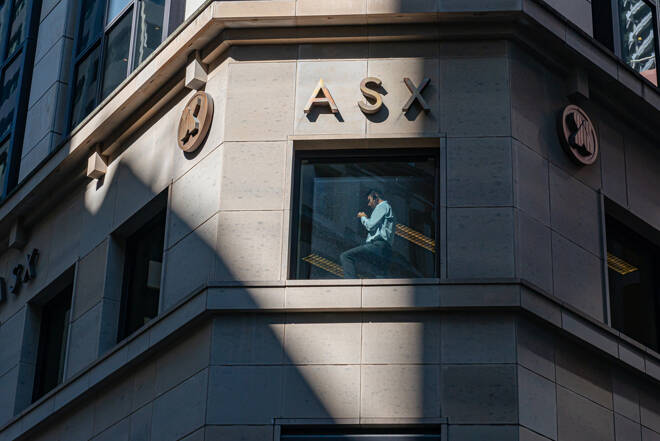Advertisement
Advertisement
ASX200: US Nonfarms and Trade Data from China to Deliver early Support
By:
It's a quiet start to the week, with no major stats to provide direction. Market reaction to the U.S nonfarm payrolls and weekend data from China should provide support.
Economic Calendar
Tuesday, 9th November
NAB Business Confidence (Oct)
Wednesday, 10th November
Westpac Consumer Sentiment (Nov)
Thursday, 11th November
Employment Change (Oct)
Full Employment Change (Oct)
Unemployment Rate (Oct)
The Majors
It was another bullish day for the ASX200 on Friday, which was up for a 3rd consecutive day.
Following a 0.48% gain on Thursday, the ASX200 rose by 0.39% to end the day at 7,456.94.
A quiet economic calendar left the ASX200 to take its cues from the U.S ahead of U.S nonfarm payrolls late on Friday.
From the RBA, an upbeat Statement of Monetary Policy also provided the ASX with support on the day.
The Stats
There were no material stats from Australia or China for the markets to consider through the Australian session.
While there were no stats, the RBA’s Statement on Monetary Policy did draw interest.
Salient points from the Statement Overview included:
- Conditions are in place for a sustained global recovery.
- Rapid increases in vaccination coverage in many countries have allowed restrictions to be eased, and economic activity to bounce back strongly.
- Expansionary fiscal and monetary policy have assisted in the recovery and continue to support the outlook.
- Global demand has strained global supply chains and logistic networks, as have disruptions to supply in some sectors.
- Central banks generally expect resulting inflationary pressures to ease and inflation to moderate over the year ahead.
- For the Australian economy, the recovery is rapid and consistent with the strong underlying momentum in the economy prior to the outbreak.
- GDP is expected to grow by 3% over 2021 and by around 5.5% over 2022 before easing back to around 2.5% over 2023.
- The impact of COVID-19 on the labor market is already receding, with the unemployment rate expected sit at under 5% by end of 2021. By end of 2023, the RBA expects the unemployment rate to reach 4%.
- Wage growth is expected to increase only gradually, however, due to spare capacity and inertia in the wage-setting process.
- The RBA expects wages to grow by around 3% by end of 2023, up from just 1.7% year-on-year to the June quarter.
- How consumption responds to higher household wealth is a key uncertainty for the outlook.
- Dwelling and business investment are both expected to lend momentum to the recovery.
On the monetary policy front
The Board is committed to maintaining highly supportive monetary conditions in order to:
- Achieve a return to full employment and inflation consistent with target.
- For inflation to be between 2 and 3% on a sustainable basis, the labor market will need to:
- Be tighter.
- Wage growth to be materially higher than they are at present.
The board will not raise the cash rate until these criteria are met, and is prepared to be patient.
The Market Movers
It was a mixed day for the banks. CBA rose by 1.12% to lead the way, with NAB ending the day up by 0.80%. Macquarie Group and ANZ (+0.24%) and (+0.28%) also found support. Westpac bucked the trend, however, sliding by 2.80%.
Commodity stocks had a bullish session. Newcrest Mining rallied by 3.55% to lead the way. BHP Group (+0.17%), Fortescue Metals Group Ltd (+0.64%), and Rio Tinto (+0.56%) saw relatively modest gains, however.
Other Asian Markets
Elsewhere, it was a bearish session, with the Hang Seng Index sliding by 1.41%.
The CSI300 and the Nikkei 225 ended the day with relatively modest losses of 0.54% and 0.61% respectively.
The Day Ahead
It’s a quiet day ahead on the Asian economic calendar. There are no material stats due out of Australia or China to provide the ASX200 with direction.
While there are no stats, we can expect market reaction to Friday’s nonfarm payrolls from the U.S and trade data from China.
According to figures released over the weekend, China’s USD trade surplus widened from US$66.76bn to US$84.54bn. Economists had forecast a narrowing to US$65.55bn.
- Year-on-year, exports were up 27.7% versus a forecasted 24.5%. In September, exports had risen by 28.1%.
- Imports increased by 20.6%, versus a forecasted 25.0%. Imports had risen by 17.6% in September.
Away from the economic calendar, corporate earnings and commodity prices will need monitoring.
The Futures
In the futures markets, at the time of writing, the ASX200 was up by 22 points.
For a look at all of today’s economic events, check out our economic calendar.
About the Author
Bob Masonauthor
With over 20 years of experience in the finance industry, Bob has been managing regional teams across Europe and Asia and focusing on analytics across both corporate and financial institutions. Currently he is covering developments relating to the financial markets, including currencies, commodities, alternative asset classes, and global equities.
Did you find this article useful?
Latest news and analysis
Advertisement
